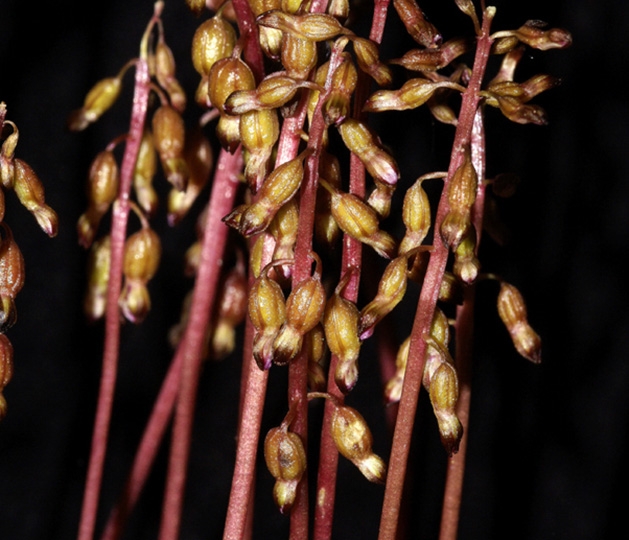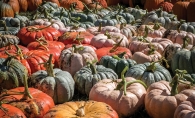
The Minnesota state flower, the lady’s slipper, is an orchid. But woodland orchids are rare, complicated,and highly temperamental, so I have yet to see a lady’s slipper. Generally, orchid flowers produce hundreds of thousands of microscopic seeds that have no enclosed food source to sustain them until they make leaves and roots. So they only grow if they make contact with certain symbiotic fungi in the ground. And even then, orchids will grow very slowly, some taking up to 12 years to repeat their life cycle. In September, I discovered a stranger-than-usual woodland orchid: the autumn coralroot orchid, which grows on a stem of only about three inches, and completely lacks leaves, chlorophyll, roots or showy flowers. The orchid spends most of its life as a mycotrophic, or fungi-loving, rhizome. When conditions are just right, the stalks will rise above ground and sprout tiny yellow, purple-tipped flowers. The autumn coralroot could pass for a dried up wildflower, or a mundane twig in the leaf litter, visually unremarkable. But for me, the tiny orchid hints at the wondrous ways life sustains itself and the complicated collaborative relationships growing just out of view in the ground beneath our feet.
Anne Marie Ruff Grewal is a writer, editor and environmentalist. She serves on the board of the Long Lake Waters Association, and has recently published her second novel, Beneath the Same Heaven—a story of love and terrorism.









